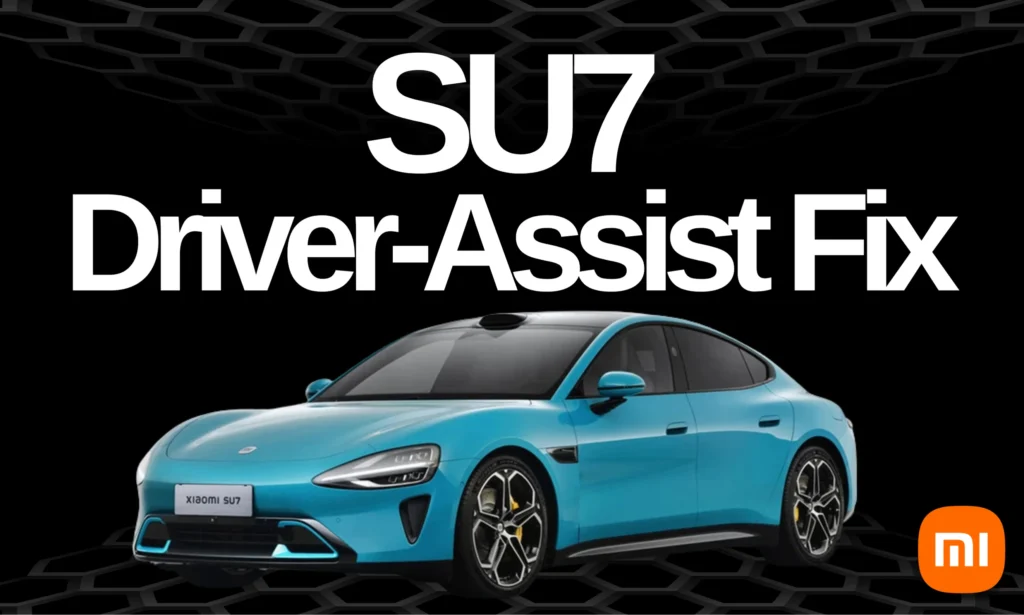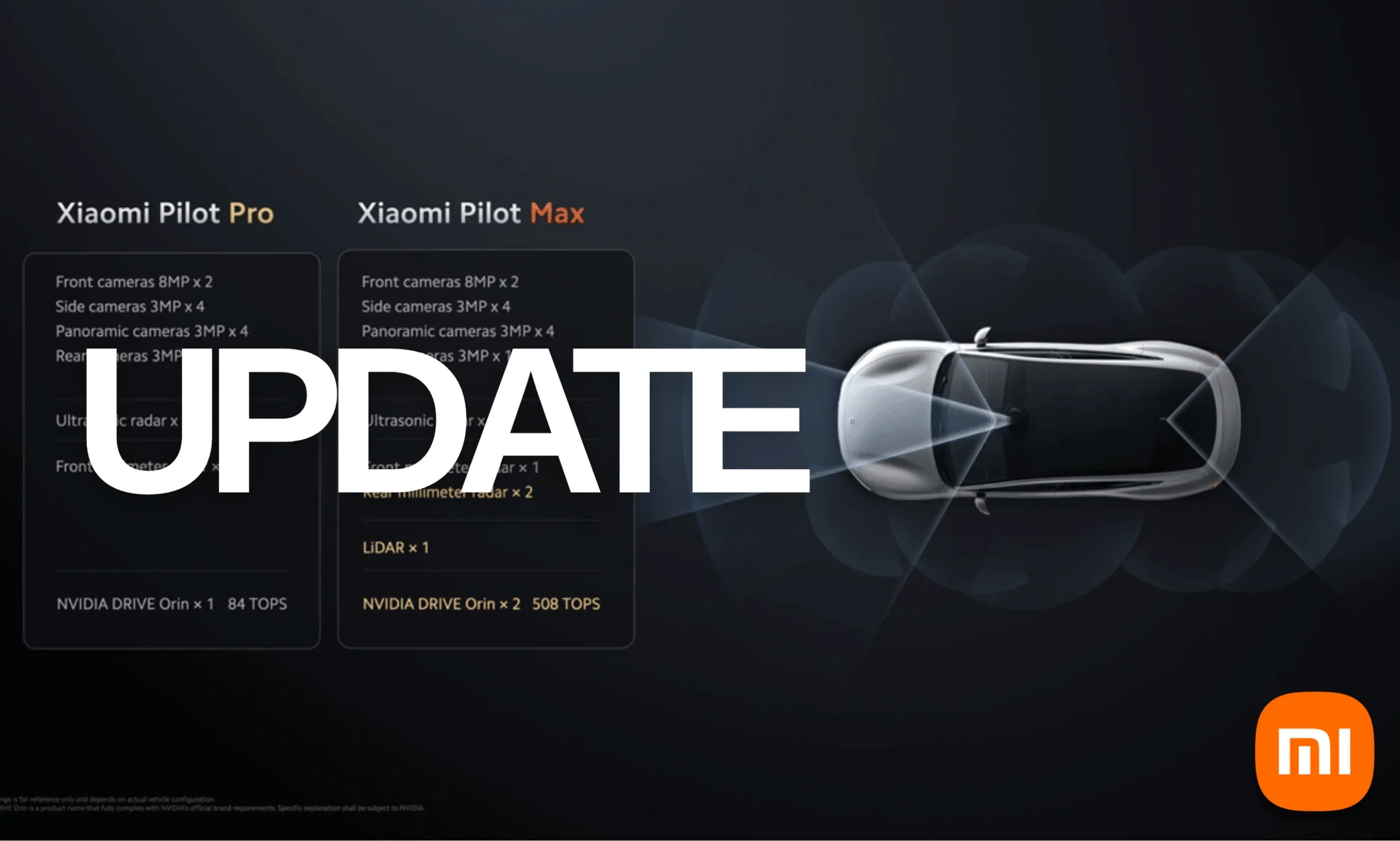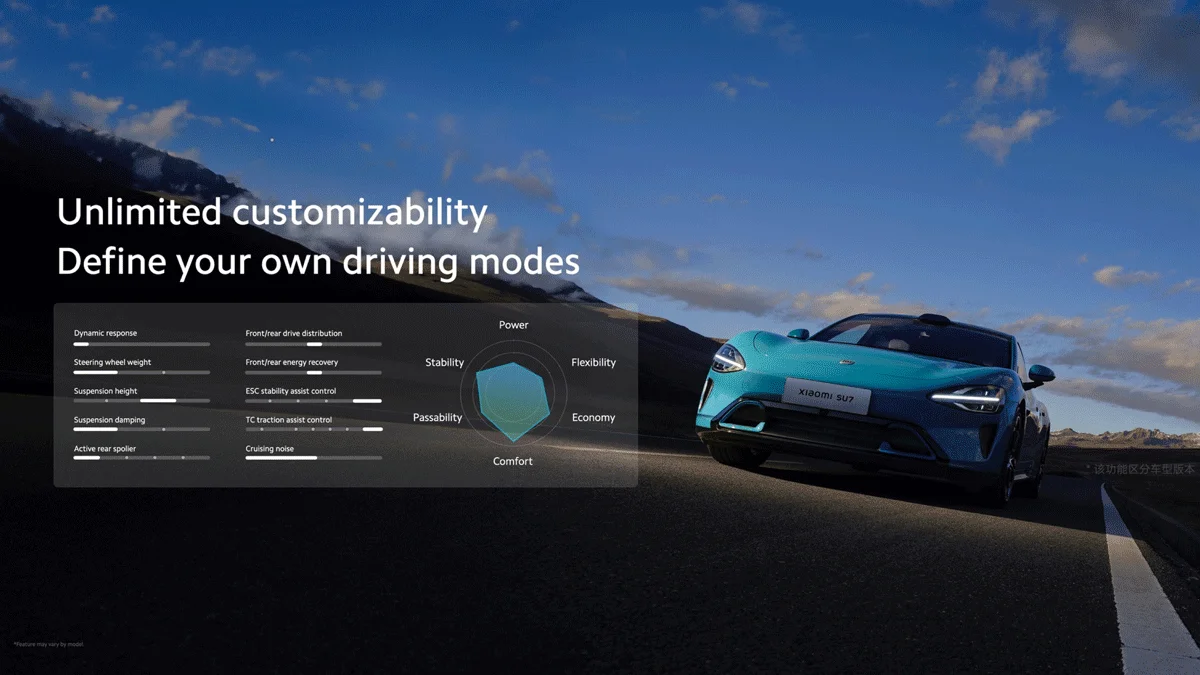Xiaomi’s SU7 Faces ADAS Hiccup: Almost 40% Affected, But Here’s Xiaomi’s Smart Fix!

Hey everyone, and welcome back to xiaomiforall.com! We all love Xiaomi for their cutting-edge tech that’s usually super accessible, right? Well, today we’re diving into something a bit more serious, but with a classic Xiaomi touch: a swift and smart solution to a potential issue with their highly anticipated SU7 electric sedan. It’s a great reminder that even the most advanced technology can face real-world challenges, and how companies tackle them is key.
The Challenge: A Software Snag in the SU7
It’s not every day you hear about a significant portion of a brand-new car model needing an update, but that’s exactly what’s happening with Xiaomi’s electric sedan, the SU7. We’re talking about nearly 40% of the standard SU7 units – that’s about 116,887 cars – getting a crucial over-the-air (OTA) software update. This isn’t about a faulty part; it’s all about the brains behind the wheel, specifically the Advanced Driver Assistance System (ADAS). Announced on September 19, 2025, by China’s State Administration for Market Regulation (SAMR), this situation really shines a spotlight on the complexities of bringing advanced driver assistance to the masses and Xiaomi’s proactive approach to keeping everyone safe.

What Exactly is the Xiaomi SU7?
For those who might have been living under a rock (or just too busy admiring Xiaomi’s latest phone!), the Xiaomi SU7 is a pretty big deal. Launched with a splash on March 28, 2024, it marked Xiaomi’s ambitious entry into the fiercely competitive electric vehicle (EV) market. And let me tell you, this car looks the part. It boasts a sleek, aerodynamic design that’s definitely been compared to some serious supercar royalty, like the Porsche Taycan. Depending on the model, you’re looking at a seriously impressive range of up to 800 km on a single charge (hello, SU7 Max!) and a 0-100 km/h sprint in under 3 seconds with the Ultra variant. As of July 2025, Xiaomi had already handed over more than 305,055 SU7s in mainland China, with August seeing monthly sales topping 30,000 units. That’s some serious momentum!
But here’s where the current update comes into play: the standard edition of the SU7 doesn’t come equipped with LiDAR sensors. LiDAR is that fancy laser tech that helps cars “see” in 3D. Without it, the standard model relies more heavily on cameras and radar for its ADAS. While this setup is perfectly capable for many driving situations, it can be a bit more sensitive in extremely complex scenarios.
Unpacking the ADAS Issue: “Insufficient Capabilities”
So, what’s the actual glitch? It affects the Level 2 (L2) highway autopilot system. This is the kind of tech that helps your car stay in its lane, maintain a set speed, and even assist with basic maneuvers on highways – but remember, you’re still supposed to be in charge and paying attention!
According to the SAMR notice, when this L2 system is active, it can sometimes struggle. The wording is “insufficient recognition, warning, or handling capabilities in extreme special scenarios.” Think about those tricky situations: sudden road construction popping up out of nowhere, pouring rain or thick fog that messes with visibility, or even just chaotic traffic jams where things change in a blink. In these moments, the car might not spot an obstacle in time, or it might not give you a loud enough heads-up to take manual control. And as we all know, at highway speeds, not reacting quickly enough can have some pretty serious consequences.
The Silver Lining: A Swift OTA Solution
The good news? This isn’t a hardware problem. It’s a software one, which means Xiaomi can fix it remotely. They’re pushing out the fix via their HyperOS 1.10.0 system – the same one that’s also bringing improvements to the YU7 SUV. This update is designed to fine-tune the car’s speed adjustments in tough conditions like nighttime or rain, make object detection much sharper, and ensure those crucial alerts are issued even earlier.
The best part? The update is completely free, and it’s rolling out right now to all affected vehicles. This applies to SU7 standard editions manufactured between February 6, 2024, and August 30, 2025. This marks Xiaomi’s second recall under Chinese regulations since the SU7’s debut, and it’s a necessary step that also ensures manufacturers are held accountable.
Lessons Learned: Safety, Technology, and User Awareness
This situation, unfortunately, has a somber backdrop. Back in March 2025, a tragic accident in Tongling, Anhui province, claimed the lives of three university students in a standard SU7. Reports indicated the ADAS was active when the car crashed into a highway barrier under repair. The system reportedly disengaged only a second before impact. This incident, along with another barrier collision in March 2024, understandably put Chinese authorities under pressure to scrutinize early-stage autonomous driving tech more closely.
Even though L2 ADAS isn’t fully autonomous – it requires constant driver supervision – these events highlight the current limitations of the technology. They also underscore the critical need for ongoing education for drivers.
What can the industry take away from this?
- Understanding Autonomy Levels: It’s crucial to remember the difference between SAE autonomy levels. L2 is assistance, not a replacement for the human driver. This is miles away from L4, where the car can handle all driving tasks in specific conditions. The standard SU7’s reliance on camera/radar over LiDAR in low visibility is a key factor here.
- OTA is a Game-Changer: Over-the-air updates are revolutionizing car safety by allowing fixes without dealership visits. However, this demands strong regulatory frameworks, like China’s, to keep innovation balanced with accountability.
- Consumer Vigilance is Key: For us drivers, this is a stark reminder: don’t get too comfortable with ADAS. Always keep your eyes on the road and be ready to take over at a moment’s notice.

Is the SU7 Still a Hot Ticket?
Despite this recall, the enthusiasm for the Xiaomi SU7 doesn’t seem to be dimming much in China. Analysts suggest that in a crowded EV market, driver assistance features, while nice, aren’t always the top priority for buyers. Price, performance, and that all-important brand ecosystem (Xiaomi’s HyperOS connecting phones to cars is a huge draw) often take precedence. Xiaomi’s integration with its vast tech ecosystem gives it a strong competitive edge against rivals like Tesla and BYD.
However, events like this can certainly make more cautious buyers pause. Transparency from manufacturers is, therefore, more important than ever.

The Road Ahead
In the grand scheme of things, Xiaomi’s swift OTA correction for the SU7 is a positive step. It not only addresses immediate safety concerns but also reinforces confidence in the future of smart electric mobility. By prioritizing safety, Xiaomi is showing real maturity as it transitions from making gadgets to making cars. It’s a solid reminder that innovation absolutely must go hand-in-hand with responsibility.
For all you SU7 owners out there, the advice is simple: check for pending updates, install them promptly, and always, always practice vigilant driving. With hundreds of thousands of these cars on the road, this proactive approach could pave the way for a much safer future for assisted driving, not just in China, but potentially everywhere.






